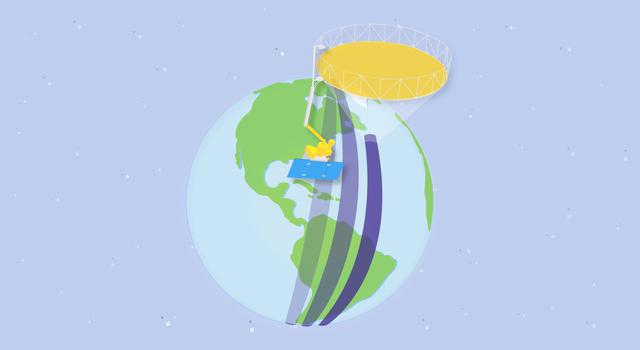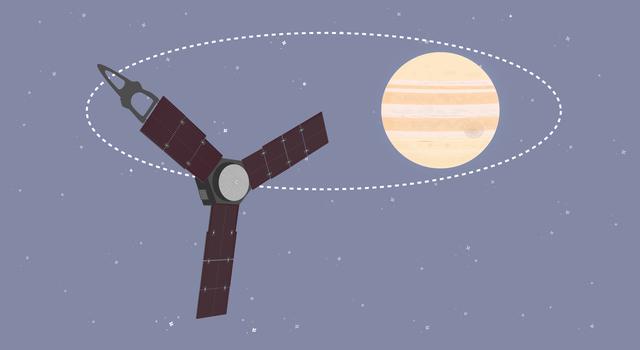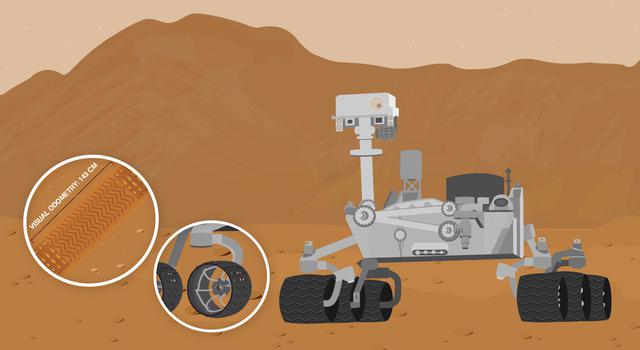Problem Set
Roving Riddle: A 'Pi in the Sky' Math Challenge
Overview
The "Pi in the Sky" math challenge gives students a chance to take part in recent discoveries and upcoming celestial events, all while using math and pi just like NASA scientists and engineers. In this problem from the set, students use the mathematical constant pi to calculate how far the Curiosity rover has traveled on the Red Planet based on its wheel rotations.
Materials
Background
Part of NASA's Mars Science Laboratory mission, Curiosity is the largest and most capable rover ever sent to Mars. It launched November 26, 2011 and landed on Mars at 10:32 p.m. PDT on Aug. 5, 2012 (1:32 a.m. EDT on Aug. 6, 2012).Curiosity set out to answer the question: Did Mars ever have the right environmental conditions to support small life forms called microbes? Early in its mission, Curiosity's scientific tools found chemical and mineral evidence of past habitable environments on Mars. It continues to explore the rock record from a time when Mars could have been home to microbial life.
Curiosity explores Gale Crater and acquires rock, soil, and air samples for onboard analysis. The car-size rover is about seven feet tall and uses a robotic arm to place tools close to rocks selected for study. Curiosity's large size allows it to carry an advanced kit of 10 science instruments. It has tools including 17 cameras, a laser to vaporize and study small pinpoint spots of rocks at a distance, and a drill to collect powdered rock samples.
It is built to climb over knee-high obstacles and travels about 100 feet (30 meters) per hour, depending on instrument activity, the terrain, and visibility its cameras have of the path ahead. The rover carries a radioisotope power system that generates electricity from the heat of plutonium's radioactive decay. This electrical power source has already far exceeded its required operating lifespan on Mars' surface of at least one full Martian year (687 Earth days). The generator provides greater mobility and flexibility in operating the rover regardless of season or sunlight. The steady flow of electrical power has enhanced the science payload capability and permitted consideration of landing sites at a greater range of latitudes than was possible on previous rovers.
Procedures
- The Curiosity Mars rover doesn’t have an odometer like those found in cars, so rover drivers calculate how far the rover has driven based on wheel rotations. Since landing on Mars in August 2012, Curiosity’s 50-centimeter-diameter wheels have rotated 3689.2 times in 568 sols (Martian days). How many kilometers has Curiosity traveled?
- Loose sand, dirt, slopes and rocks can influence the rover’s progress, so engineers use a technique called visual odometry to determine how much Curiosity’s wheels are slipping. On a steep slope covered in loose dirt, engineers note that the distance between the rover’s visual odometry markers is only 143 centimeters. What percent are Curiosity’s wheels slipping with each rotation?

Assessment

Extensions
Pi Day Challenges- Pi in the Sky
- Pi in the Sky 2
- Pi in the Sky 3
- Pi in the Sky 4
- Pi in the Sky Challenge (slideshow for students)
Multimedia
Features
Websites








